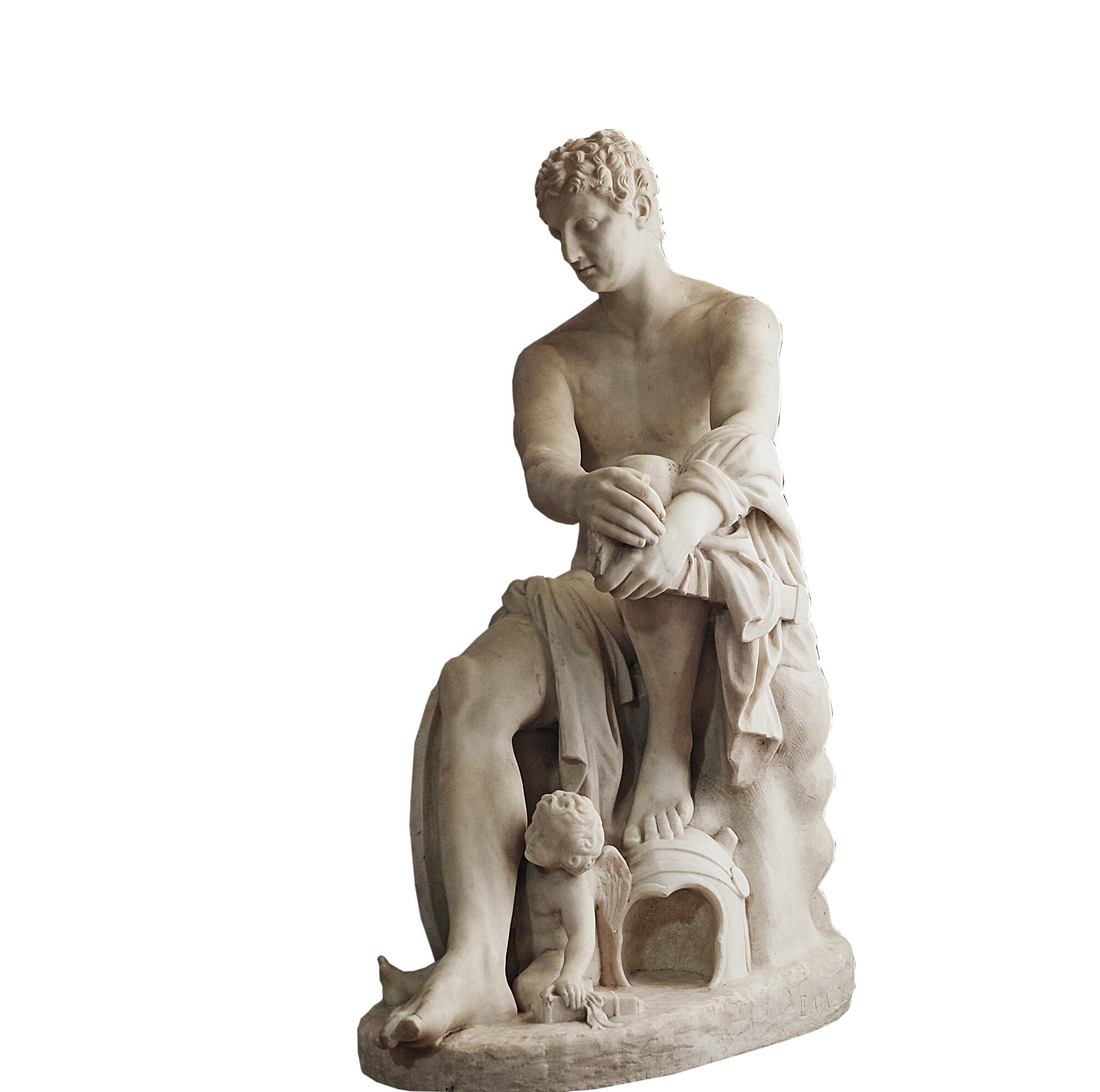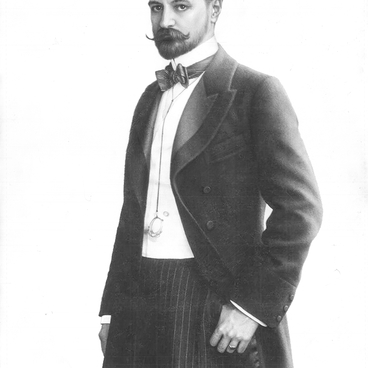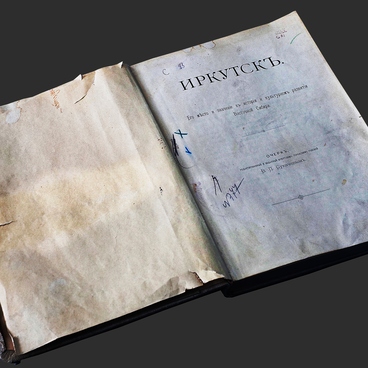Ares (Arey) is an artful and unprincipled god in the Ancient Greek mythology. Homer described him as a cruel, aggressively inclined person, who can easily kill whoever. Antique literature often described relationships between Ares and Aphrodite. According to the mythology, their love affair gave birth to many children (Deimos, Eros, Harmonia, and Phobos). In the Roman mythology the Greek god of war got the name Mars.
The Ares’s image was very popular in the Ancient Greece, it can be found in the Greek vase painting, gigantomachy (a fight between the Olympian gods and the Giants) in the reliefs of the east metopes of the Parthenon, in sculpture. However, the interest to the god of war remained in force for centuries. This image inspired such painters as Sandro Botticelli, Paolo Veronese, Andrea Mantegna, Peter Paul Rubens, sculptor Antonio Canova.
This showpiece was taken from Italy. It was kept at the prince Volkonsky’s family estate in Pavlovka. The statue was made after the marble copy of Ludovisi Ares, which was found in Italy in the 17th century. The found statue was a copy of the original Ancient Greek sculpture. Currently it is exhibited in Palazzo Altemps.
As a rule, Ares’s attributes were a spear, a burning torch, dogs, and a hawk. However, in this sculpture Ares is shown in a calm, almost serene image as a strong young man, who leisurely put his hands on his left leg, there’s a Cupid fiddling around his right foot. Among the symbols of his martial nature are only a shield and a helmet. The lack of the facial expression at the god’s face is typical for early Greek sculptures. The statues got emotional gradations in the Hellenistic period. The pedestal has the sculptor’s signature E. Gazzеri Roma.
Ernesto Gazzeri was born in Modena in 1866. Later he moved to Rome, where, inspired by its classical atmosphere, he became a famous sculptor working with marble. He became renowned working on the sculpture portraits and mortuary monuments, most notably with his late masterpiece, the monument to Tommaso Campanella, which was copied in 1923 in Stilo, Italy. He also worked with the genre works and mythological plots.



